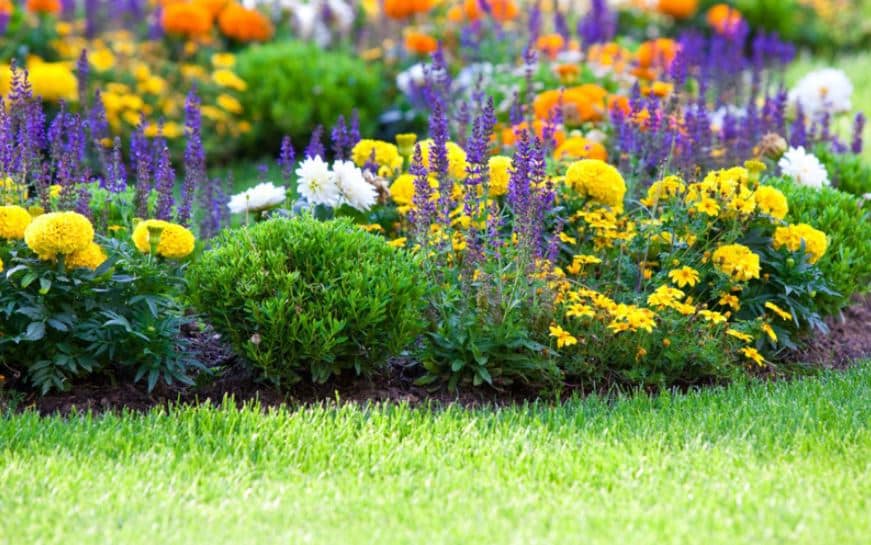A beautiful garden offers a number of benefits to a home. In addition to providing oxygen, they improve the aesthetics of a home and allow you to grow your favorite fruits and veggies. Although you can’t grow just any plant in your garden, this doesn’t narrow down your options much. There are still a number of fruits, veggies, and flowers that can thrive in your garden and ensure healthy growth all year long.
Whether this is your first time gardening or you’re simply looking to revamp your yard, there are a few things you’ll need to consider to make sure your garden thrives.
Here are some things to consider when gardening.
Contents
1. Decide on the Theme

Deciding the theme of your garden is the first step to gardening correctly. A theme helps unify the landscape by guiding you on your plant and material selections. Themes can be used as shapes, or they can be made complex by creating a relaxing or oriental garden.
When deciding on a theme, the best place to start is by looking at the architecture of your home. Since the yard is an extension of your home, try to complement the style and lines of your home’s architecture. Once you’ve selected the theme, you will then be able to decide on how to place and select the plants, hardscapes, decorations, and other structures.
From creating soft lines for a natural space to forming geometric shapes and patterns for a neat look, a unified theme will help you decide on the aesthetics of your garden.
2. Make Your Plants Work for You

It’s imperative to determine how your plants will function in your garden before you start your gardening process. Plants can be used in many ways, from providing fresh fruits and vegetables to adding to the scenery and spreading their lovely aromas.
Many people also use plants to define areas within their landscape. Plants can be used to build physical barriers by blocking the view and access to an area. However, if you want to keep your view open while blocking access, you can opt for low-growing plants.
3. Consider the Environment

The environment is one of the most critical aspects to consider when garden. Before you dive deep into buying your favorite plants, make sure to do your research to see which plants are most suitable for your environment. The climate and soil type are two important factors the make up your garden’s environment.
4. The Size of the Plants

All plants have different shapes and sizes throughout their lifetime. Before choosing any plant for your garden, especially trees, it’s imperative to find out how big they will grow when fully mature. This will help you plan them in the correct area where there’s enough space for them to grow peacefully. Planting trees and other big plants in small areas can cause many problems. For instance, the roots of some trees spread extensively and can damage your home’s foundations.
5. Flowering Time

The best part about gardening is seeing the final product of your efforts for the first time. So, when you spend so much time planting your flowers, nothing makes your eyes and heart happier than seeing the flowers in full bloom, displaying their bright colors and adding beauty to your garden.
If you want beautiful flowers in your garden, not in just spring, but throughout the year, consider creating a plant calendar. Doing this will help plan which plants and flowers will bloom best in which season. Green foliage is the ideal plant that thrives all year round.
6. The Amount of Shade

It is critical to consider the amount of shade your plants will have. If you live in a place with a warm climate, you will need to ensure that your plants aren’t subject to heat stress due to a lack of shade.
In such situations, trees are great options. Although they take many years to grow, trees provide shade, shelter, and filtered light to plants planted close by or directly underneath them. Also, in the warmer months, shade from a large tree is a great place to sit and cool down.
If you don’t have any trees in your garden, then make sure to choose plants according to the weather and the amount of shade there is.
7. Amount of Required Maintenance

All plants require maintenance once they’ve been planted. While almost all of them require water, sunlight, and soil to grow, some have their specific requirements. For instance, some plants have to be pruned occasionally to remain in shape and to keep them from overtaking the garden.
Only with these things in mind should you decide whether you’re prepared to spend the time and energy required to keep these plants in order or not. If you aren’t, then you can always settle on low-maintenance plants that require less work.
8. Resistance to Parasites and Diseases
As amazing as plants are aesthetically and generally, the reality is that they can be prone to certain diseases that severely impact their health. Insects and parasites can be another lingering threat to your plants.
However, if you don’t want to deal with these problems during gardening, take out some time to search for plant species that have a higher resistance to parasites and diseases. We’re sure you’ll find more than a handful of some beautiful and resistant plant species.
The Bottom Line
Planting a garden isn’t easy. There are multiple factors you need to consider when selecting the plants and planning the structure of your garden. We hope the above-listed things to consider when gardening offer you some guidance to help create the garden of your dreams.